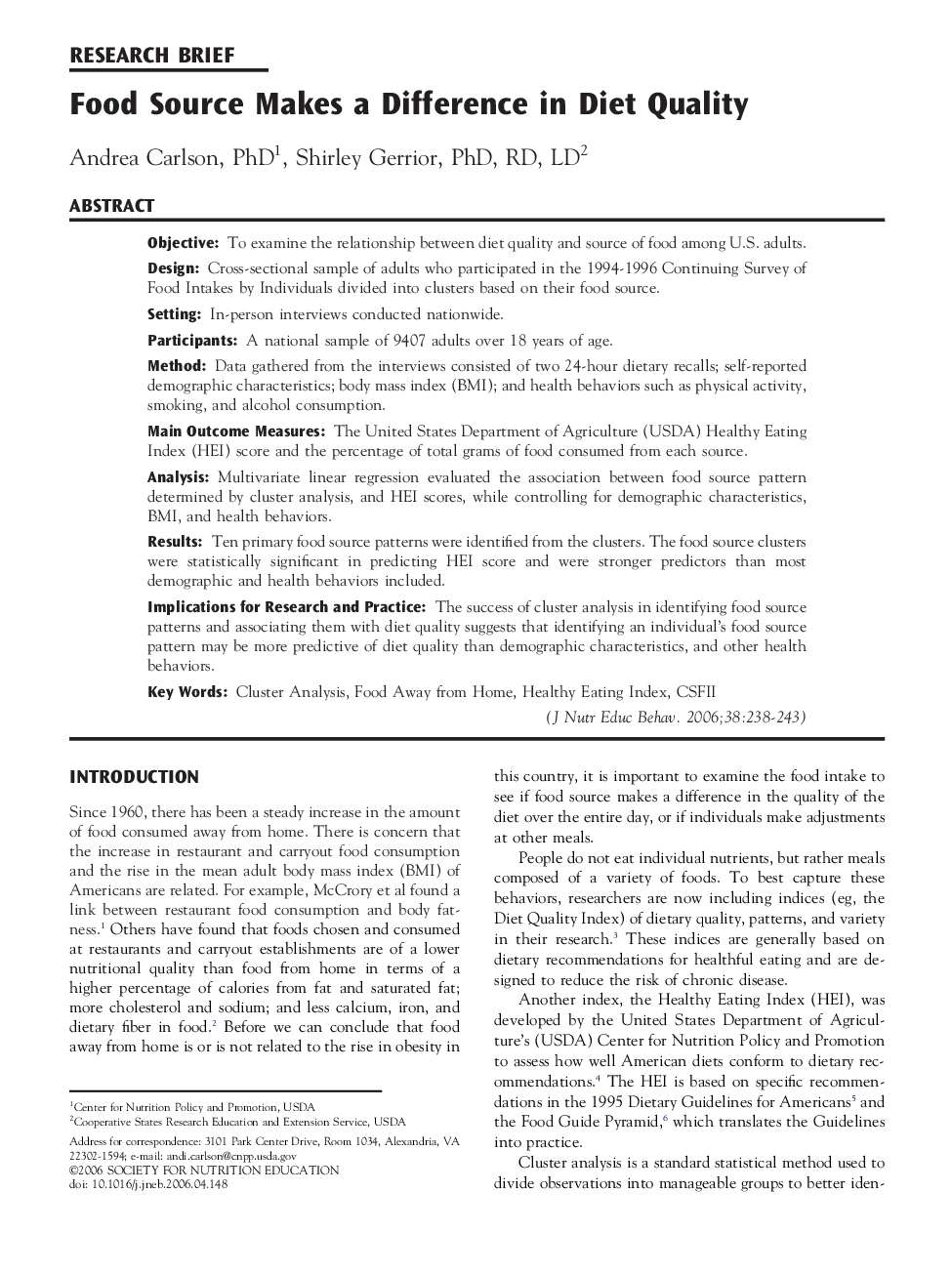| Article ID | Journal | Published Year | Pages | File Type |
|---|---|---|---|---|
| 363406 | Journal of Nutrition Education and Behavior | 2006 | 6 Pages |
ObjectiveTo examine the relationship between diet quality and source of food among U.S. adults.DesignCross-sectional sample of adults who participated in the 1994-1996 Continuing Survey of Food Intakes by Individuals divided into clusters based on their food source.SettingIn-person interviews conducted nationwide.ParticipantsA national sample of 9407 adults over 18 years of age.MethodData gathered from the interviews consisted of two 24-hour dietary recalls; self-reported demographic characteristics; body mass index (BMI); and health behaviors such as physical activity, smoking, and alcohol consumption.Main Outcome MeasuresThe United States Department of Agriculture (USDA) Healthy Eating Index (HEI) score and the percentage of total grams of food consumed from each source.AnalysisMultivariate linear regression evaluated the association between food source pattern determined by cluster analysis, and HEI scores, while controlling for demographic characteristics, BMI, and health behaviors.ResultsTen primary food source patterns were identified from the clusters. The food source clusters were statistically significant in predicting HEI score and were stronger predictors than most demographic and health behaviors included.Implications for Research and PracticeThe success of cluster analysis in identifying food source patterns and associating them with diet quality suggests that identifying an individual’s food source pattern may be more predictive of diet quality than demographic characteristics, and other health behaviors.
